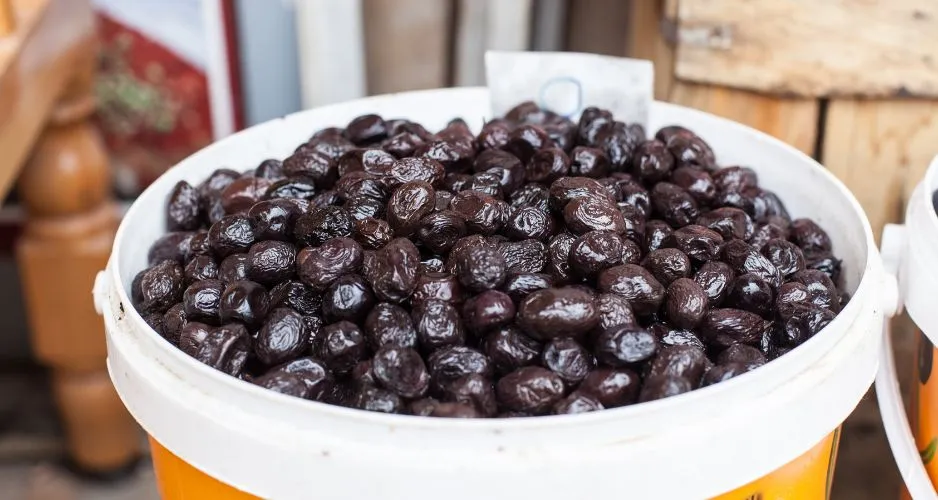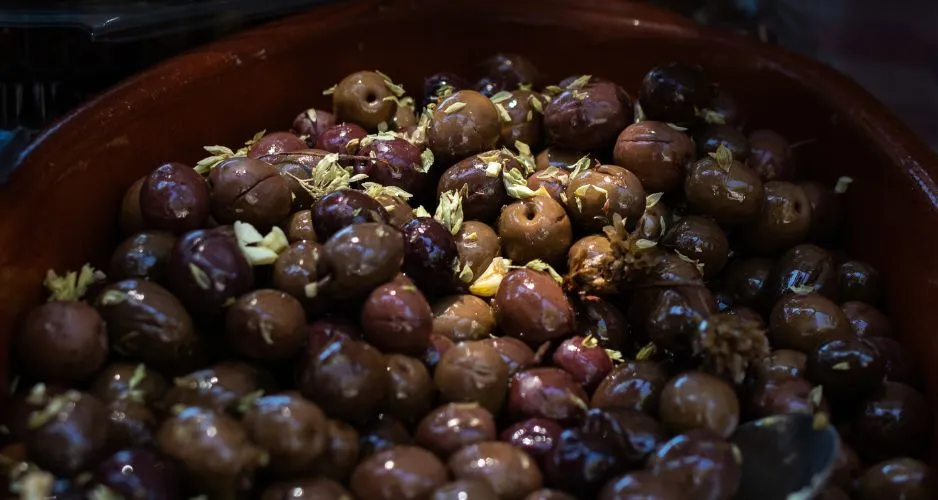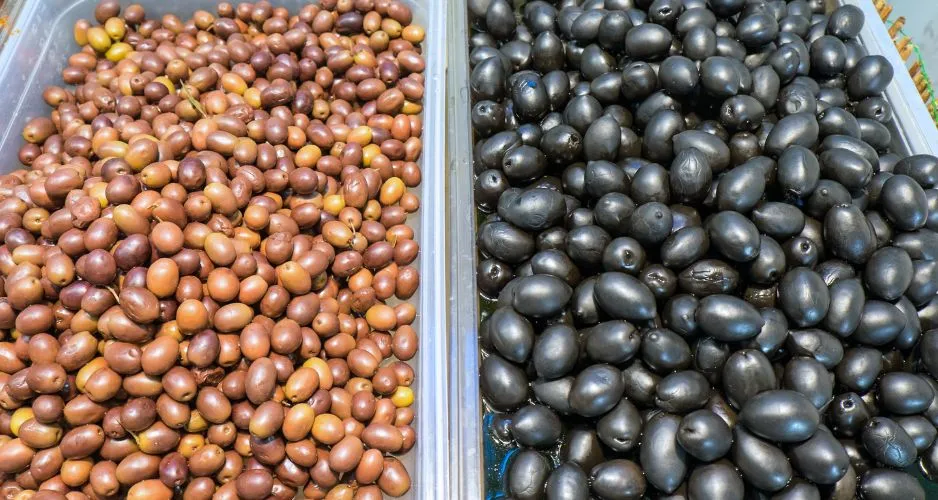Diving into the world of black olives, we embark on a flavorful journey that spans history, nutrition, and culinary artistry. These small, yet mighty fruits of the olive tree are not just a staple in Mediterranean cuisine; they are a global delicacy, cherished for their rich taste, health benefits, and versatility in dishes. From the briny depths of olive groves to your kitchen, let’s unravel the story of olives, exploring their varieties, nutritional profile, and the myriad ways they can enhance our meals and health.
Introduction
Ah, black olives—those little orbs of delight that dance on the taste buds with their meaty texture and briny flavor. But, what exactly makes them so special? Well, for starters, black olives are not just a garnish on your pizza or a sidekick in your salads. They are a culinary treasure with a history as rich as their flavor.
Black olives, the ripe fruits of the olive tree, have been a cornerstone of Mediterranean cuisine for thousands of years. Cultivated first in the Mediterranean basin, these olives have spread their branches across the globe, becoming a beloved ingredient in many cultures. Their journey from the tree to the table is a testament to human ingenuity in food preservation and flavor enhancement.
The allure of black olives lies not only in their taste but also in their versatility. Whether pitted, sliced, or whole, they add a depth of flavor to dishes that is unmatched. Their briny, slightly bitter taste can transform a simple dish into a complex, mouthwatering masterpiece. Moreover, their oil—olive oil—is liquid gold in the culinary world, prized for its health benefits and its central role in the Mediterranean diet.
Nutritional Profile and Health Benefits
Nutritional Benefits of Black Olives
Black olives are not just a treat for the taste buds; they’re a boon for your health too. Packed with vitamins, minerals, and heart-healthy fats, these little fruits are nutritional powerhouses. Rich in Vitamin E and antioxidants, black olives help combat oxidative stress, reducing the risk of chronic diseases. They’re also a great source of iron, which is essential for transporting oxygen in the blood.
Moreover, the monounsaturated fats found in black olives are a key component of a healthy diet. These fats contribute to heart health, helping to lower bad cholesterol levels and maintain the integrity of blood vessels. So, incorporating black olives into your diet is not just a culinary delight but a step towards a healthier lifestyle.

Black Olives and Diet
For those following specific dietary plans, black olives are a perfect fit. Their low carbohydrate content makes them a staple in the Keto diet, providing healthy fats without the carbs. Additionally, their role in the Mediterranean diet is well-documented. This diet, known for its health benefits, emphasizes fruits, vegetables, whole grains, and, importantly, olive oil and olives.
The versatility of these olives means they can enhance a variety of dishes, from salads to main courses, without compromising dietary restrictions. Whether you’re looking to boost your intake of healthy fats, antioxidants, or simply add a burst of flavor to your meals, black olives are an excellent choice.
Incorporating black olives into your diet is not just about enjoying their delicious taste; it’s about embracing a lifestyle that values nutrition, health, and the joy of eating well. So, the next time you reach for that jar of black olives, remember, you’re not just adding flavor to your dish; you’re nourishing your body with every bite.
As we continue to explore the world of black olives, let’s keep in mind their nutritional benefits and the role they play in a balanced diet. From their rich history to their health advantages, black olives are truly a culinary and nutritional treasure.
Varieties and Selection
Types of Black Olives
When it comes to black olives, variety is the spice of life. From the robust Kalamata to the delicate Ligurian, each type offers a unique flavor profile and texture. Kalamata olives, with their deep purple hue and almond shape, are a staple in Greek cuisine, known for their rich, fruity flavor. Ligurian olives, on the other hand, hail from Italy and boast a mild, buttery taste that complements a wide range of dishes.
Exploring the different varieties of black olives is like embarking on a culinary tour around the Mediterranean. Each type brings its own character to dishes, whether it’s the meaty texture of a Moroccan dry-cured olive or the smooth, mild flavor of a California black olive. The diversity among black olive varieties ensures there’s an olive out there for every palate and recipe.

Selecting the Best Black Olives
Selecting the best black olives can elevate your dishes from good to unforgettable. When choosing black olives, look for those that are firm to the touch and have a glossy, unblemished skin. Avoid olives that appear shriveled or have soft spots, as these may be past their prime.
If you’re shopping for olives in a brine, taste the brine if possible. It should be pleasantly salty and may have notes of herbs or vinegar, indicating well-seasoned olives. For those buying canned or jarred olives, check the expiration date to ensure freshness.
Remember, the best black olives are the ones that suit your taste and the dish you’re preparing. Experiment with different varieties to discover which olives you prefer, whether you’re making a tapenade, topping a pizza, or simply enjoying them as a snack.
In the world of olives, variety and quality go hand in hand. By exploring the different types and selecting the best olives for your needs, you can unlock the full culinary potential of this versatile ingredient. So, the next time you find yourself in the olive aisle, take a moment to appreciate the diversity and richness of these olives bring to our tables and our palates.
Culinary Uses
Incorporating Black Olives into Meals
The culinary versatility of black olives is truly remarkable. They can add depth and complexity to a wide array of dishes, making them a favorite among chefs and home cooks alike. Whether you’re sprinkling them over a salad for a briny kick, blending them into a rich tapenade, or simply tossing them into a Mediterranean pasta.
One of the simplest yet most delightful ways to enjoy black olives is in a classic Greek salad, where their meaty texture contrasts beautifully with the crispness of fresh vegetables. For a more robust dish, consider adding these olives to a hearty stew or casserole. Their rich flavor melds wonderfully with other ingredients, infusing the dish with a touch of Mediterranean magic.
DIY: Preparing and Storing Black Olives
Preparing and storing black olives at home can enhance their flavor and extend their shelf life. If you’re lucky enough to have access to fresh olives, curing them is a rewarding process that allows you to customize the flavor to your liking. There are several methods for curing olives, including brine curing, dry curing, and water curing, each resulting in a different texture and taste.
Once cured or if you’re working with store-bought olives, storing them properly is key to maintaining their quality. Keep olives in a cool, dark place, and if opened, ensure they’re fully submerged in their brine and stored in a tightly sealed container in the refrigerator. This will keep them fresh and flavorful for several weeks, if not longer.
The joy of cooking with black olives lies not just in their taste but in the creativity they inspire in the kitchen. From simple snacks to elaborate dishes, these olives offer a world of culinary possibilities. So, why not experiment with this versatile ingredient and discover new ways to incorporate the rich, briny flavor of olives into your cooking repertoire?
Olives in Culture and Cuisine
Cultural Significance of Black Olives
The story of black olives is deeply woven into the fabric of Mediterranean culture and beyond. For centuries, these small fruits have played a crucial role not just in the diet but in the economy, health, and traditions of many societies. In Greece, olive trees are symbols of peace and prosperity, while in Italy, the harvest brings communities together in a celebration of food and family.
The cultural significance of black olives extends beyond their nutritional value; they are a testament to the human relationship with the land. Olive trees, some of which are hundreds of years old, are cared for by generations, creating a tangible link between the past and the present. This deep connection is reflected in the cuisine, where olives are not merely an ingredient but a cherished part of the culinary heritage.

Black Olives Around the World
While olives are synonymous with Mediterranean cuisine, their appeal is truly global. In the United States, they are a popular topping on pizzas and a key ingredient in salads. In North Africa, they are essential to many traditional dishes, adding depth and flavor to tagines and couscous.
The versatility of olives has allowed them to find a place in kitchens around the world, adapting to local tastes and ingredients. From the spicy olive dishes of the Middle East to the olive-infused sauces of South America, they continue to inspire innovation in global cuisine.
The journey of olives from the tree to the table is a story of tradition, innovation, and the universal love of food. As we explore the many ways in which olives enrich our meals and our lives, we celebrate not just a delicious ingredient but a cultural icon that transcends borders and brings people together.
In the world of food, few ingredients are as universally beloved and culturally significant as olives. Their rich history, nutritional benefits, and culinary versatility make them a staple in diets and cuisines across the globe. As we continue to discover and appreciate the many facets of olives, we not only enhance our meals but also connect with a rich cultural heritage that spans centuries.
FAQs
Black olives spark curiosity and questions, from their health benefits to their culinary uses. Let’s dive into some frequently asked questions to shed light on these intriguing fruits.
Are black olives naturally black?
Yes, black olives are naturally black, indicating they are fully ripe when harvested. The color transition from green to black signifies the olive’s maturity and flavor development.
Can you eat black olives directly from the tree?
No, black olives are not palatable straight from the tree due to their bitterness. They undergo curing processes, such as brining or dry curing, to remove the bitterness and make them enjoyable to eat.
Are black olives good for you?
Absolutely. Black olives are rich in healthy fats, vitamins, and antioxidants, contributing to heart health and reducing inflammation. They’re a nutritious addition to any diet.
How should you store olives to keep them fresh?
Store them in a cool, dark place if unopened. Once opened, ensure they’re fully submerged in their brine or oil and keep them in a tightly sealed container in the refrigerator to maintain freshness.
Can black olives be used in cooking?
Yes, black olives are versatile in cooking. They can be added to salads, pizzas, pastas, and more, providing a rich, briny flavor that enhances the overall taste of dishes.
Understanding black olives better allows us to appreciate their role in our diets and cuisines more deeply. Whether you’re a seasoned olive enthusiast or new to their flavors, there’s always something new to learn and enjoy about these fascinating fruits.
As we’ve explored the world of black olives, from their nutritional benefits to their cultural significance, it’s clear they are more than just a food item. They are a symbol of tradition, a source of health, and a key ingredient in delicious meals worldwide. Let’s continue to celebrate and savor the rich, briny goodness of olives in our cooking and eating adventures.
Conclusion
As we conclude our exploration of olives, their impact is undeniable. Their history, rooted in Mediterranean culture, alongside their nutritional and culinary benefits, marks them as more than mere ingredients. They are global diet staples.
olives bridge cultures and cuisines, uniting us through shared meals and traditions. They highlight the simplicity and richness of nature’s offerings and the joy found in cooking with time-honored ingredients.
Whether drizzling olive oil on a salad, adding olives to pasta, or enjoying them as a snack, remember their journey to your table. Celebrate their flavors, health benefits, and cultural importance with each bite.
Let’s keep exploring the vast world of food, with olives as our muse. They encourage us to try new recipes, explore flavors, and cherish culinary traditions. Here’s to the delicious, briny world of black olives – a realm of taste, tradition, and timeless charm.
Thank you for this flavorful journey. May it enrich your meals, boost your health, and spark your culinary curiosity. Here’s to many more tasty discoveries!
